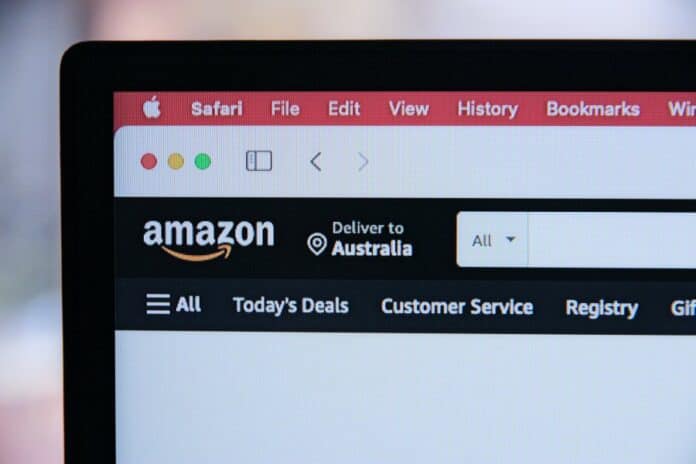Selling on Amazon FBA has become an increasingly popular way for businesses to expand their presence and reach a broader audience. However, as with any opportunity, there are fees associated with utilizing the platform. Optimizing and managing seller fees on Amazon FBA is crucial for sellers wanting to maximize their profits and maintain a competitive edge in online retail.
Amazon FBA fees can be broken down into several major categories, including the professional seller account, fulfillment, and inventory storage fees. By understanding these costs and implementing smart fee management strategies, sellers can effectively maintain their margins while taking advantage of Amazon’s vast customer base.
In this article, we will delve into the cost structure of Amazon FBA, discuss the various types of fees that sellers may encounter, and provide valuable insights and cost-saving techniques to help sellers effectively manage their fees. With a well-planned strategy, Amazon FBA sellers can optimize their fee management and enhance their overall business performance.
Understanding Amazon FBA Seller Fees
Amazon FBA (Fulfillment by Amazon) is a popular service that allows sellers to store their products in Amazon’s fulfillment centers. Amazon takes care of storage, packaging, and shipping, allowing sellers to focus on other aspects of their business. However, the various seller fees on Amazon can impact a seller’s profitability. This section will briefly discuss the main types of fees associated with selling on Amazon FBA.
Fulfillment fees are the charges for Amazon’s picking, packing, and shipping of products sold through FBA. These fees depend on the size and weight of the items. For example, small standard-sized items (up to 15x12x0.75 inches) weighing 6 oz. or less have a fulfillment fee of $2.16, while items weighing 6-12 oz. have a fee of $2.35. Large standard-sized items (up to 18x14x8 inches) have fulfillment fees of $2.35 and $2.60 for the same weight ranges.
Inventory storage fees are the charges for storing products in Amazon’s fulfillment centers. These fees are calculated based on the space occupied by a seller’s inventory, measured in cubic feet. Storage fees vary depending on the time of year, with higher fees during the peak holiday season (October to December) to account for increased demand for storage space.
Amazon charges referral fees as a percentage of the product’s selling price. For most product categories, the referral fee is 15% of the item’s selling price, with some categories having lower or higher percentages.
Sellers may also be subject to additional fees, such as subscription fees for professional seller accounts, removal fees for disposing or returning inventory, and long-term storage fees for inventory stored in Amazon’s fulfillment centers for extended periods.
To optimize seller fees on Amazon FBA, it is crucial to understand the fee structure and manage your inventory efficiently. This involves monitoring storage fees by regularly updating your inventory levels and evaluating the profitability of your products, considering the fees involved. Smart fee management can help you balance costs and profits while leveraging Amazon’s vast fulfillment network.
Smart Fee Management Strategies
Product Selection
Selecting the right products is crucial for optimizing Amazon FBA fees. Focus on items with high demand and low competition, leading to lower storage fees and less warehouse time. Consider the product size and weight, as they affect the fulfillment fees. Ideally, choose smaller, lightweight products with higher profit margins.
Pricing Optimization
Pricing optimization involves analyzing competitor pricing and market trends to determine the best price for your product. Aim to find a balance between competitive prices and maintaining profitability. Additionally, consider using repricing tools to automate price updates based on various factors, including inventory and competitor price changes. Proper pricing optimization can impact the product’s performance on Amazon and, ultimately, the FBA fees.
Inventory Management
Efficient inventory management is critical in reducing storage fees. Monitor your inventory levels closely and adjust based on sales trends, seasonal fluctuations, and promotional events. Develop a solid forecasting system to avoid overstocking or understocking, which could lead to high storage fees or lost sales opportunities. Furthermore, consider using Amazon’s FBA Small and Light program for small, lightweight items with lower fulfillment costs. To save on picking and packing fees, bundle products together.
Applying these smart fee management strategies can significantly improve your Amazon FBA experience, leading to increased profits and better control over your selling expenses.
Reducing Storage and Operational Costs
Managing Deadstock Inventory
Eliminating deadstock inventory is crucial for Amazon FBA sellers, as it can contribute to increased storage fees and tied-up capital. To effectively manage deadstock inventory, it’s essential to monitor stock levels and take steps to reduce slow-moving products. One approach is to offer discounts or promotions on items sitting in Amazon’s fulfillment centers for a long period. Alternatively, consider bundling slow-moving items with popular products to increase their sales velocity.
Analyzing sales data can help identify trends and patterns in customer demand. Being aware of these insights allows sellers to adjust their inventory levels and avoid stocking too much of a slow-selling item. Utilize Amazon’s inventory management tools, like the Inventory Performance Index, to help track and optimize inventory management effectively.
Optimizing Fulfillment Methods
Choosing the right fulfillment method can save money and prevent unnecessary fees. It’s vital for Amazon FBA sellers to evaluate their business model, product types, and customer base to determine the best fulfillment option. Some possible methods include FBA, FBM (Fulfillment by Merchant), and SFP (Seller Fulfilled Prime).
- FBA: Ideal for sellers who want to leverage Amazon’s customer base, Prime eligibility, and streamlined logistics network. However, keep in mind the FBA fees, which include storage fees and fulfillment fees.
- FBM: Suitable for sellers with the capacity to manage their shipping and storage. This option can potentially save money on fees and offer more control over the fulfillment process.
- SFP: Best for sellers who can meet Amazon’s strict shipping and performance requirements but want to keep control over their inventory. This option allows sellers to maintain their Prime eligibility while handling fulfillment themselves.
Maintain a balance between different fulfillment methods based on the product and sales velocity. For instance, consider using FBA for high-selling items and FBM or SFP for slower-moving items to optimize costs. Continuously evaluate and adjust fulfillment strategies to align with sales trends and customer demands to ensure efficient operations and minimized costs.












